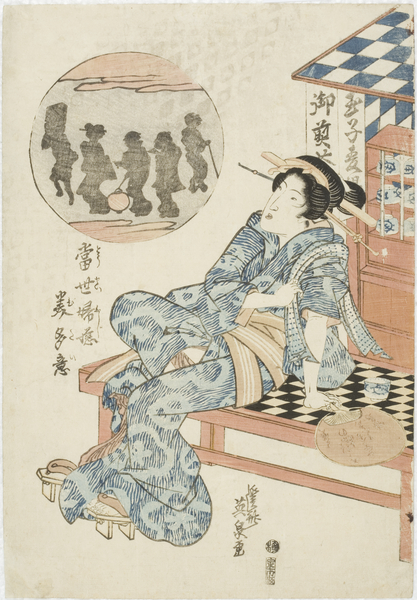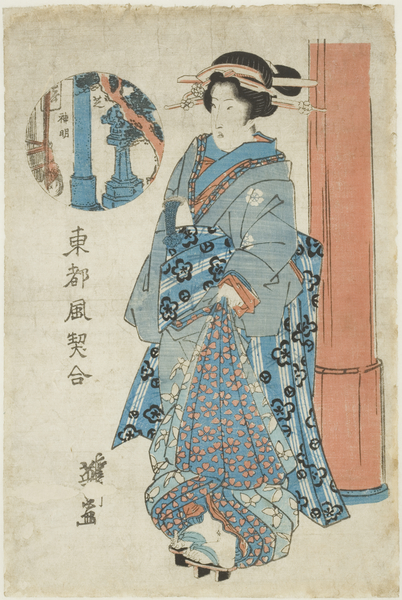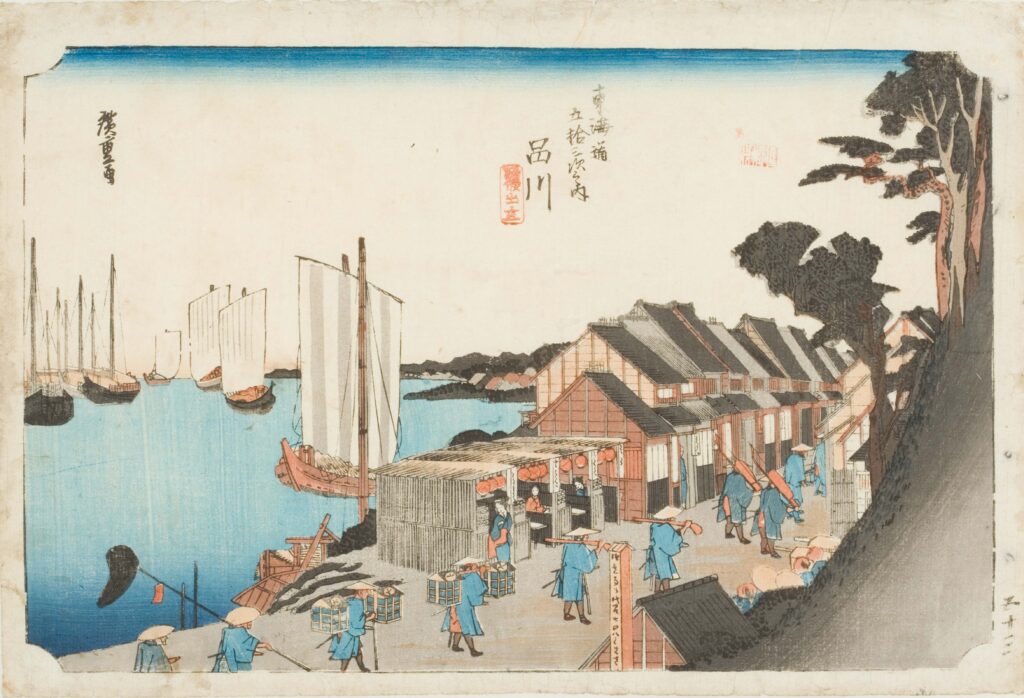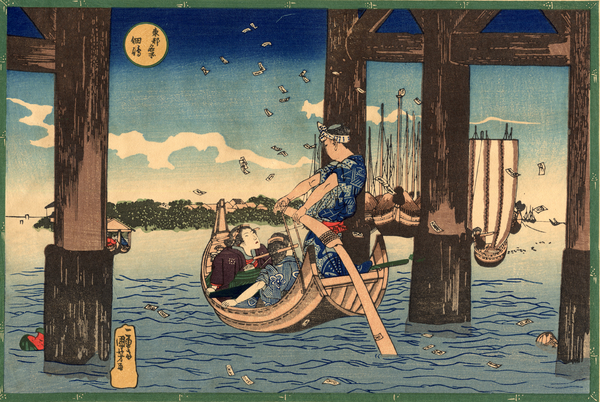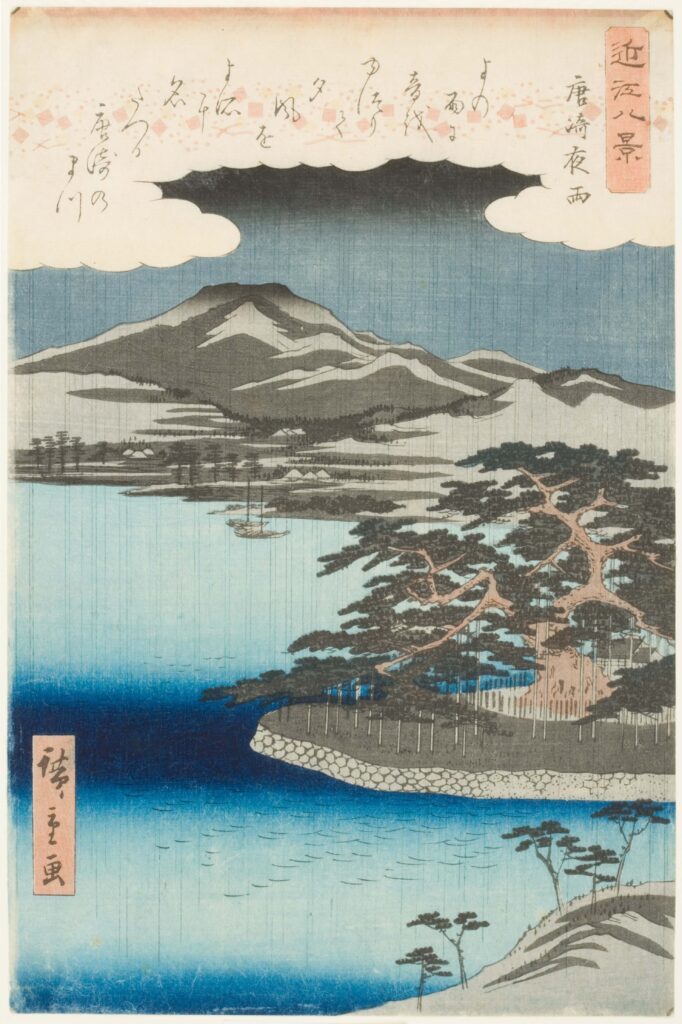
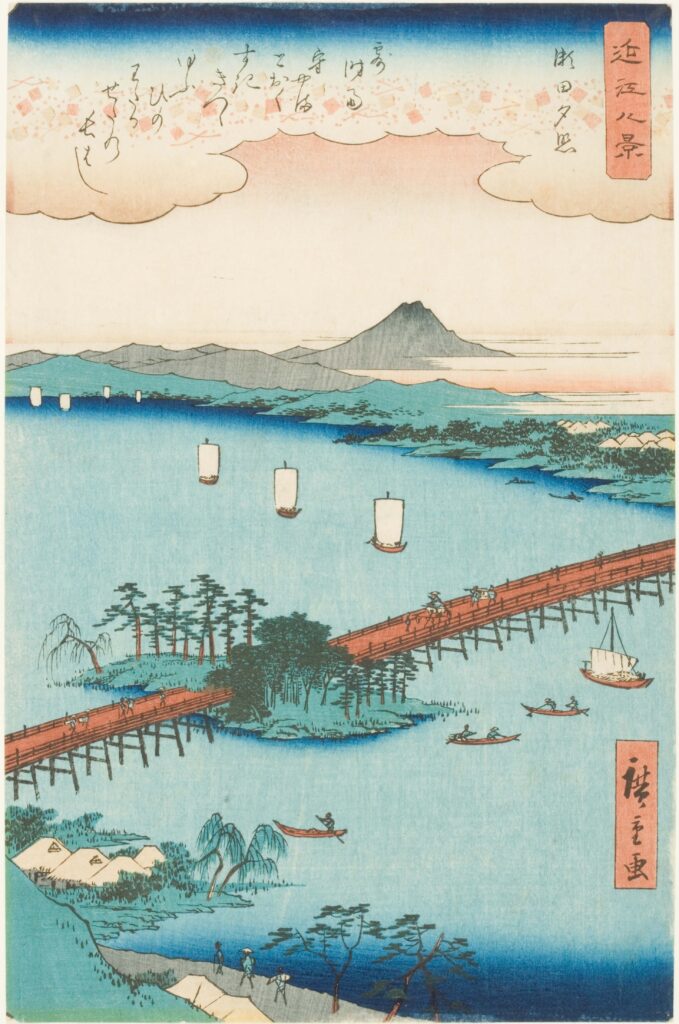
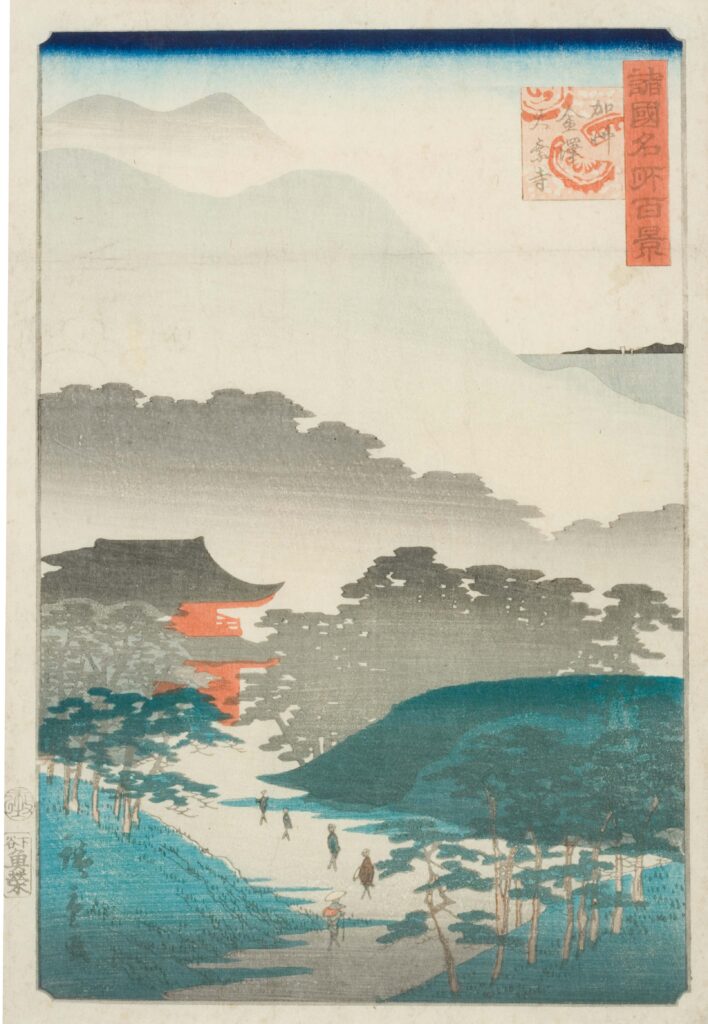
Fiona curates
The everyday life in Japan : a traveller’s perspective
日本的日常:旅人的視角
Many people in Hong Kong regard Japan as their ‘second home’ for various reasons. These include the short flight distance, delicious food, good public security, rich cultural atmosphere, and many more. Japanese people are very polite and considerate. Once, I was in Osaka and wanted to visit the Umeda Sky Building. I asked a passerby for directions, and he ended up personally taking me to my destination. It was incredibly considerate of him!
I love Japanese culture, but haven’t had the chance to revisit Japan in a long time. So, I would like to highlight some Japanese prints from the museum collection which remind me of the wonderful times I had visiting Japan.
許多香港人視日本為「第二故鄉」。吸引香港人到訪日本的原因包括飛行距離短、食物美味、文化氛圍濃鬱、治安良好等等。除此之外,日本人很有禮貌,懂得為別人著想,如果您在日本迷路或找不到前往目的地的路,總會有當地人來幫忙。有一次我在大阪,想去梅田藍天大廈。其間我向一個路人問路,最後他竟親自送我去到目的地,真的極之貼心。
我很喜歡日本文化,但很久沒有去日本了,所以在館藏中挑選了一些日本版畫作網上展覽。這些版畫讓我回想起我在日本遊玩時的美妙時光。
Ukiyo-e
Ukiyo-e was a very popular art genre in Japan during the Edo period (1615-1868), and ukiyo-e prints depicted scenes of daily life in Japan. Ukiyo-e prints could be mass-produced and sold very cheaply, making them popular amongst the public. These prints also introduced new perspectives to Western artists and sparked an interest in drawing inspiration from everyday life.
浮世繪在日本江戶時代(1615年至1868年)大為盛行,而浮世繪木刻版畫所描繪的是日本日常生活的情景。浮世繪印刷品可以大量生產,售價便宜,因此受到大眾的歡迎。同時,這些版畫也為西方藝術家引入了新的嶄新的視角,並激發了從生活中汲取靈感的興趣。
Enjoying the Evening Cool at Shijo-Kawara
This Edo period colour woodblock print references a scene from the Genji Monogatari (The Tale of Genji), a classic work of Japanese literature. In the story, Prince Genji visits Kyoto on at least two occasions.
The print depicts the Shijo-Kawara area in central Kyoto, Japan, situated along the Kamo River, which flows north to south through the city. This district became a popular theatre and entertainment hub during the Edo period (1615-1868). It is believed to be where Kabuki theatre originated, a distinctive aspect of Japanese culture, beginning with performances of dancing and singing on the dry riverbeds in the early 17th century.
In the summer, platforms set up in the river shallows, as seen in this print, became popular spots for relaxation. People would drink tea and enjoy the cooling river breeze. Central to this scene, depicted on the right side of the triptych, is Prince Genji, the protagonist of Genji Monogatari.
這幅江戶時代的彩色木刻版畫參考了《源氏物語》中的一個場景,這是日本文學中的經典作品。在故事中,源氏王子至少有兩次訪問京都。
這幅版畫描繪了位於日本京都市中心的四條河原地區,沿著鴨川而建,鴨川是貫穿城市南北的主要河流。該地區在江戶時代(1615-1868)成為一個受歡迎的劇院和娛樂區。據說,歌舞伎劇場起源於此,這是日本文化的一個獨特傳統,被認為於17世紀初起源自鴨川乾涸的河床上舞蹈和歌唱表演。
如這幅版畫所見,平台在夏天矗立在河灘上,成為人們放鬆、喝茶、享受涼爽河風的場所。在這個場景的中心,三聯畫右側描繪的正是《源氏物語》中的主人翁源氏王子。
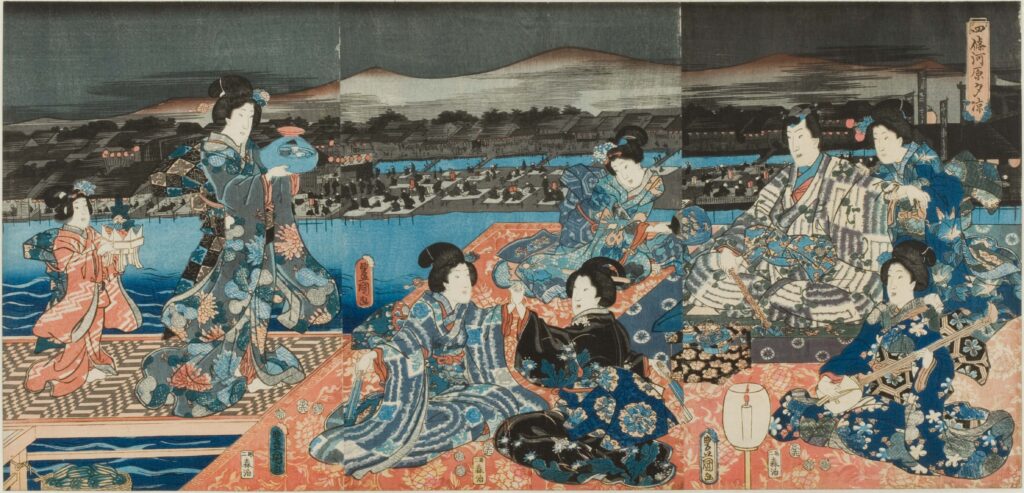
Shijo-Kawara in Present Times
I have visited Shijo-Kawara as depicted in the painting. I took a boat ride on the Kamo River, steered by a young man, and had lunch on the platforms along the riverbank.
In the time when the artist created this painting, such experiences were reserved for wealthy businessmen. Today, however, ordinary people like myself can also enjoy the beautiful scenery and delightful food in this charming area.
我去過畫中的四條河原,與丈夫坐在年輕人撐著的小船上遊覽鴨川,在河邊的平台上吃午餐。
在畫家繪畫這幅畫的時候只有富商才能享受這樣的待遇,不像今日,像我這樣的平民百姓也可以在那裡享受美麗的風景和美味的食物。
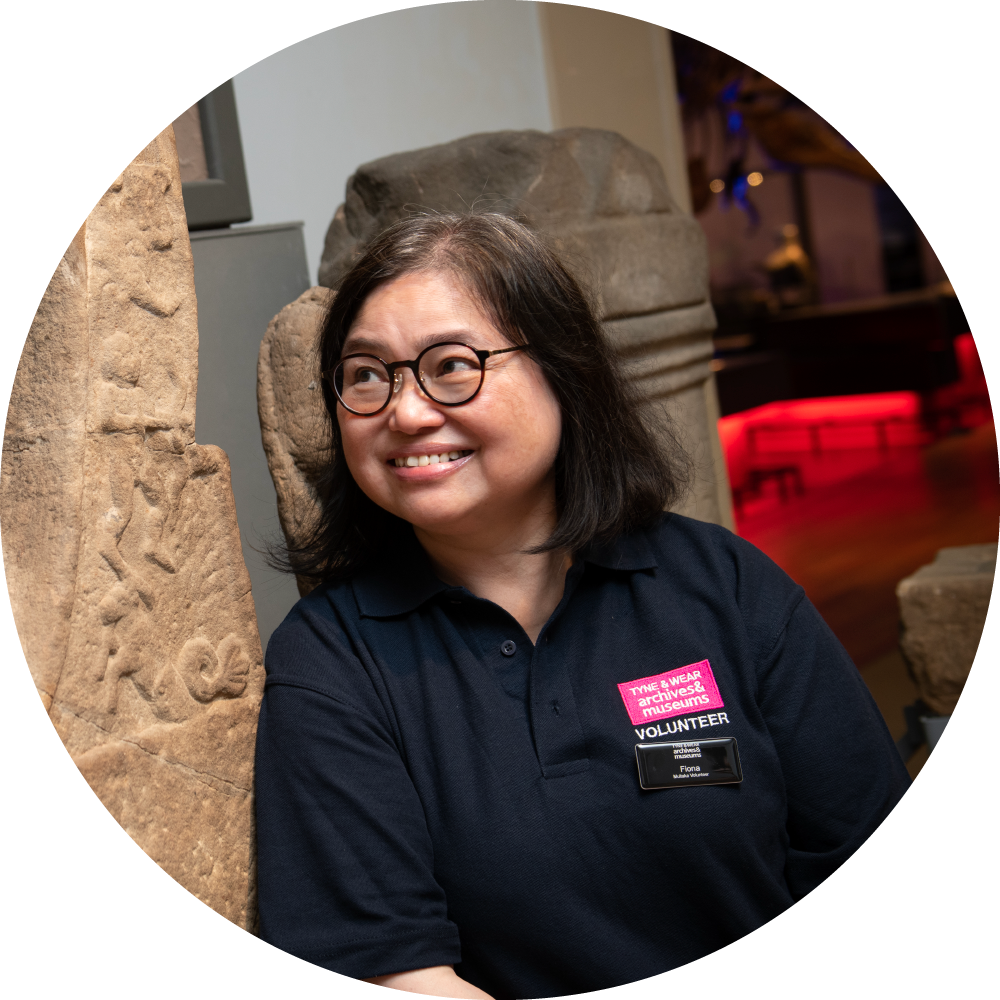
Fiona's Commentary (Cantonese)
Tsukuda Island, Famous Views of the Eastern Capital
This print by Utagawa Kuniyoshi depicts a pair of women in a boat rowed by a male figure. There is a ferry under Eitai Bridge with the island of Tsukuda in the background from Famous Views of the Eastern Capital, a series of ten prints portraying people in landscapes. Each print from this series is characterised by a green bamboo border.
Tsukudajima is a small island in Tokyo Bay. Although I have not yet visited this island, my husband and I once took a boat ride on the Kamo River in Kyoto. The experience was reminiscent of the scene in this print: a young man stood at one end of the boat, manoeuvring the oar with both hands, as the boat passed under many bridges.
這幅由歌川國芳創作的版畫描繪了兩位女士坐在一艘由一位男士划行的小船上。畫中展示了永代橋下的一艘渡船,背景是佃島,取自《東都名所》系列。這個系列共有十幅版畫,描繪了人物與風景。每幅版畫都以綠竹邊框為特徵。
佃島是東京灣的一個小島。我沒去過佃島,但我和丈夫在京都的鴨川上乘過船,就像這幅畫裡的場景 —— 一個年輕人站在船的一端,用雙手搖著船槳,小船從許多橋下經過。

Fiona's Commentary (Cantonese)
In a Japanese Garden
This painting shows a group of young Japanese girls in traditional costume gathering on a balcony overlooking a garden. The densely patterned surface of the painting creates a shimmering mosaic of colour and light, which is typical of Edward Hornel’s style. He visited Japan for eighteen months in 1893-94, and painted Japanese subjects for many years afterwards.
Like the two ukiyo-e prints mentioned previously, this painting portray the daily life of Japanese people. However, what is particularly interesting is that the artist was British, not Japanese. While he painted four women in traditional kimonos in a garden, their expressions differ significantly from those found in ukiyo-e created by Japanese artists.
這幅畫描繪了一群身穿傳統服飾的日本少女聚集在陽台上,俯瞰著花園。畫面上密集的圖案營造出色彩與光線閃爍的馬賽克效果,這是愛德華·霍內爾風格的典型特徵。他在1893年至1894年間曾造訪日本十八個月,並在隨後的多年裡持續創作以日本為主題的作品。
跟上面兩幅的浮世繪一樣,畫中所描繪的是日本人的日常生活。但很有趣的是,畫家不是日本人,而是一個英國人,因此雖然他畫的是四個在花園裏穿著傳統和服的女子,但這些女子展露的表情跟一般日本浮世繪所見的很不一樣。
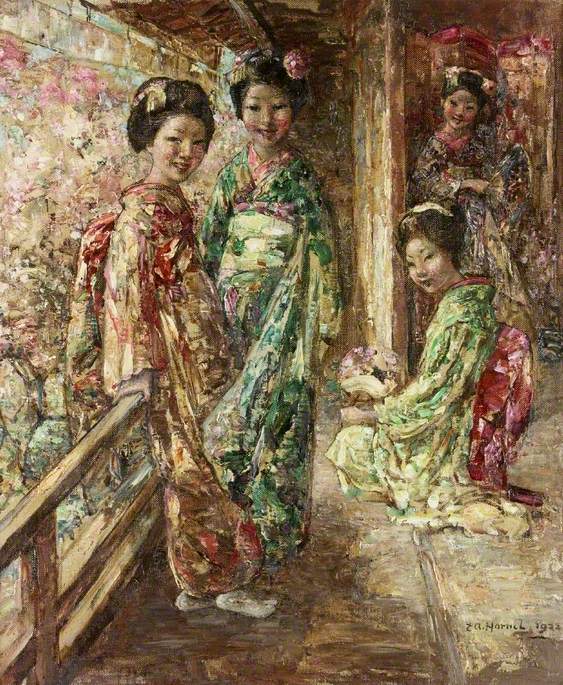
Representation of Female Figures in Ukiyo-e
Typically, Japanese women in ukiyo-e have more reserved expressions and rarely show their teeth, even when smiling. In contrast, the Japanese women depicted in this British artist’s painting smile brightly, with two of them even exposing their teeth.
This difference may perhaps be due to cultural differences between the East and the West, which could influence the artist’s perspective. It is also possible that the women smiled so happily at the painter’s request, or that the artist painted the women from memory or reference materials instead of from life.
However, as someone from East Asia, I was taught from a young age that girls should smile without showing their teeth, as displaying them might be considered too forward and lacking grace.
一般浮世繪中的女子,她們的表情都比較嚴肅,即使笑也不會露齒。然而,上述由西方人所繪畫的日本女子都笑得十分燦爛,而最前面的兩位,更是笑至露出她們的牙齒。這差異可能是由於東西方文化不同,所以藝術家的觀點也不同。也有可能是女生們應畫家的要求而笑得那麼愉快,又或者是藝術家並非現場寫生,而是憑記憶或參考資料作此畫。
但在我作為一個來自東方的人,自小就受到媽媽的教育,就是女孩要笑不露齒,否則就不夠矜持了。

Fiona's Commentary (Cantonese)
